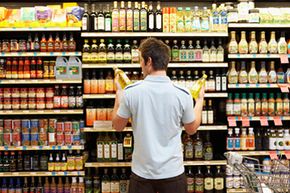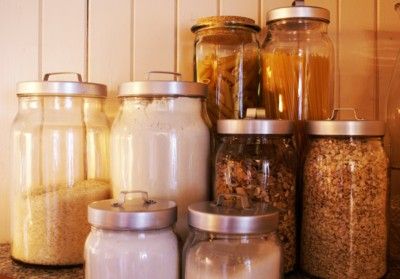It's an average Tuesday evening and you're scouring the contents of your pantry and refrigerator. Surely there's something in here you can fix for your dinner, right? You grab a can of green beans and leftover pasta that's been preserved in a bowl sealed with plastic wrap. You take the aluminum foil off the loaf of artisan bread you picked up a couple of days ago and — voila! — dinner is done. And, as a bonus, it's reasonably healthy.
What you don't see are the silent ingredients that have seeped into your food during storage, namely the chemicals that are contained in the packaging that comes into contact with your food. In fact, the Food Packaging Forum, a Swiss nonprofit, has linked 175 toxic substances to modern packaging materials such as aluminum foil, cans and plastic wrap [source: Wagner]. Formaldehyde, for example, is a known carcinogen, yet low levels of the substance are legally allowed in plastic bottles for carbonated beverages. Other food packaging contains bisphenol A, tributylin, triclosan and phthalates, which are known to inhibit fertility and cause hormonal disruption.
Advertisement
How much damage exposure to these chemicals causes over a lifetime — or to the food itself — is still unclear, but scientists are taking a closer look at whether food packaging can actually improve the nutritional makeup of the food it has contact with. Enter smart packaging. This new generation of packaging could involve all sorts of innovations, such as milk carton interiors with an enzyme that would eliminate lactose or packaging that prevents food decay by killing specific microorganisms. Food encased in antimicrobial smart packaging might need fewer additives, and it might taste better thanks to the addition of certain polymers [source: Waldman].
Food packaging may also routinely include nanoparticles, ultrafine units of matter that are between 1 and 100 nanometers in size. While this may sound like a space-age solution best reserved for a sci-fi movie, it's already happening. Nanosilver (silver nanoparticles that inhibit microbial growth) is in baby bottles and cutting boards. More to the point, it's authorized for use in plastic food containers in the United States (although it's banned in the European Union). But despite its use, nanosilver isn't well understood, nor are its potential effects on food, nutrition and the human body [source: Seltenrich].
Advertisement

